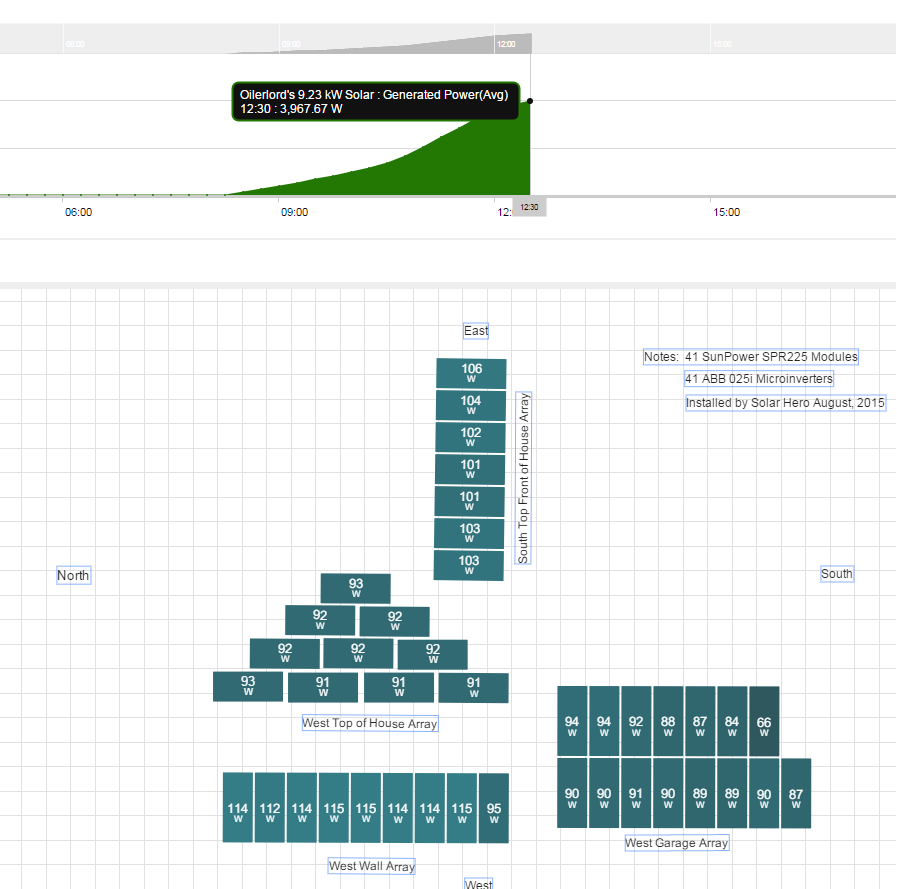A lot has been speculated about how snow impacts solar production in Alberta. While there are very good examples of high solar penetration in nothern climates such as in Ontario, and many places in Europe, in this blog post we’ll try to discuss in greater detail the impact of solar production in Alberta.
Cold is good!
A 250W module (commonly referred to as a solar panel) or a 3kW system are going to produce said power under standard conditions which are a full sun intensity and a cell temperature of 25 degree Celsius (amongst other conditions). Higher operating temperatures lead to lower solar production, and so lower operating temperature lead to higher solar production.
This means that although solar panels receive less sunlight in the winter, they produce more energy over the amount of sunlight they receive compared to warmer seasons of the year. Anyone who carefully monitors their rooftop solar production knows highest efficiencies in Alberta are observed in the months of March and April because of their combination of low temperatures and high sun altitude.
Production losses incurred by snow
The Northern Alberta Institute of Technology (NAIT) installed two solar sub-arrays facing south as shown below. One sub-array had its snow actively removed from it; the other sub-array was setup as the control and had no snow removed from it.
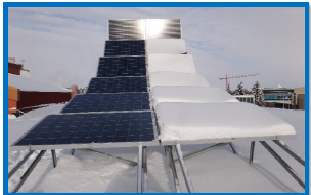
The NAIT Solar Reference Array which was built to study how snow impacts solar production in Alberta – The subarray on the left has snow actively removed from it, while the one on the right acts as a control.
A report was published after one year of observation and showed that losses incurred by snow are limited to a maximum of 5% of annual production. Below is a plot of the array’s solar production and snow losses with increasing pitch. The angles mentioned in the report range from 14 degrees to 90 degrees.
How snow impacts solar production in Alberta
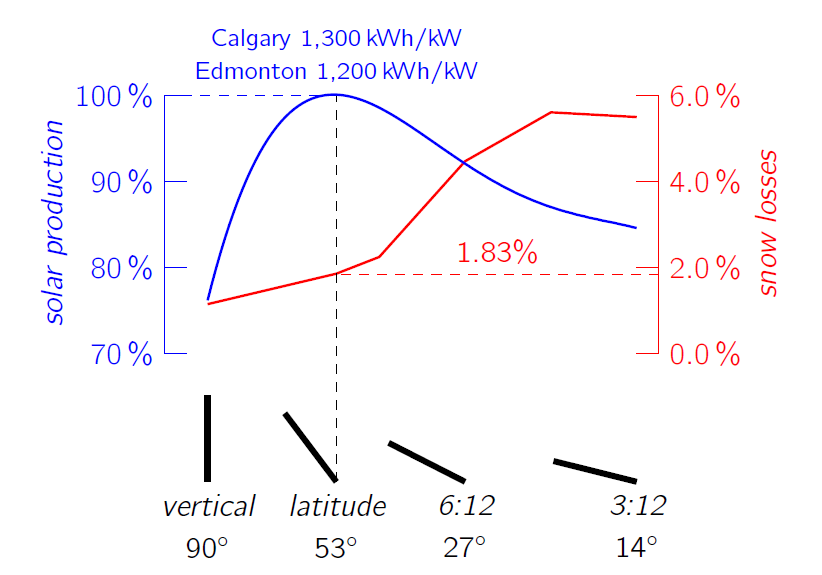
How Snow Impacts Solar Production in Alberta
First of all it’s important to note that roofs that have pitches that are close to 12:12 experience the maximum annual solar output which is about 1,300 kilowatt-hours per kilowatt per year in Calgary, or 1,200 kWh per kW per year in Edmonton. If your roof only has a slight pitch of say, 3:12 your annual production is only 15% less. We can also see from the graph above that snow has the biggest impact on flat pitched roofs, specifically the 18 degree tilt. Interestingly, panels flatter than that suffered less from snow and that’s probably because they didn’t capture that much winter sunlight to begin with given how far up they are pointed in the sky. Actually numbers reported by PV Cartes Maps for Calgary show the same phenomenon for 12:12 (45 degree) roofs vs latitude-inclined roofs.
Mounting on walls?
However, concluding at that would be looking at the glass half empty. As we saw above, snow has a limited affect on production, especially on very steep panels. Although wall mounted panels produce about 25% less power than ideal, you can count on that they will produce power more consistently. That’s why you will find them installed in remote areas powering critical appliances.
One of our clients fully realized solar’s economies of scale, and decided to build a system that maximized his entire southern potential. He decided to install an additional nine 225W Sunpower solar panels with a total rating of two kW on his south western wall as part of his 9.23kW grid-tie system. The panels not only produce power, but they shade a bedroom and give it a look of a sleek window:
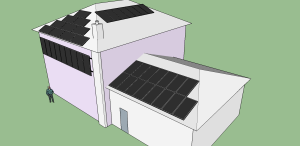
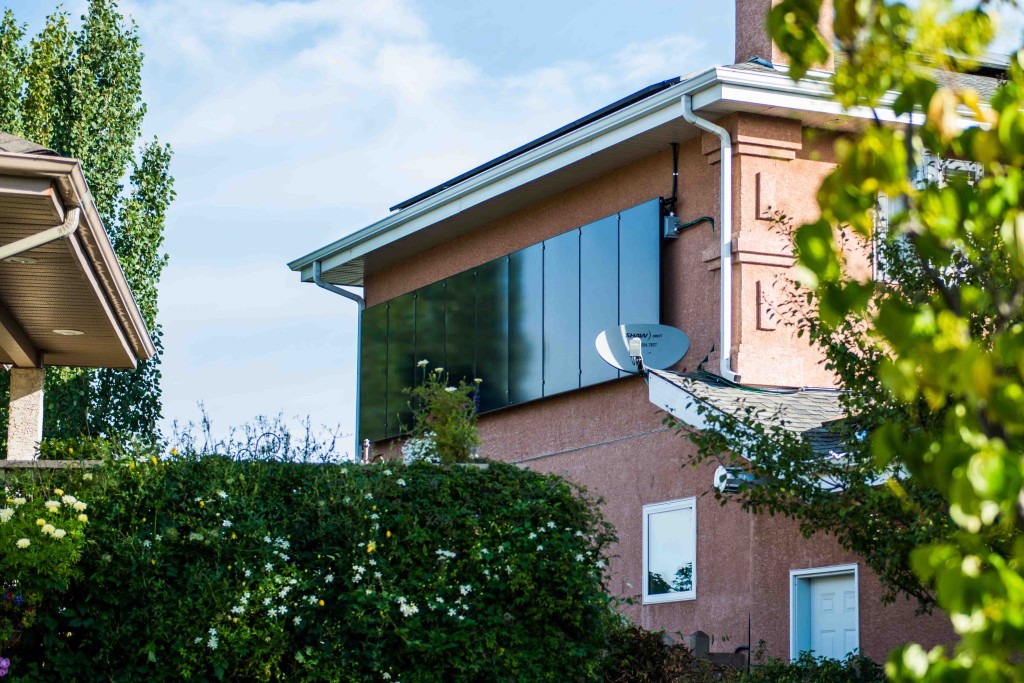
2.0kW solar wall array with Sunpower panels
It’s about 30 minutes past solar noon and look at how well the wall array is doing compared to the others. (The other panels are not covered in snow at this time.)
It’s not a big deal how snow impacts solar production
Solar is a great resource in Alberta and cold temperatures in and of themselves are good for solar production. Whilst the impact of snow has a detrimental effect on a solar panel’s power production, it incurs no more than 6% in losses of total annual production. This is because we are so high up north that most of the solar production is concentrated between the months of March and September.

